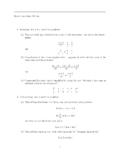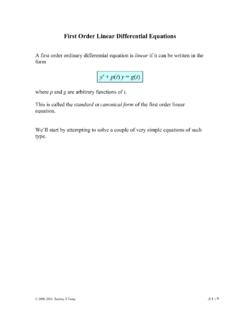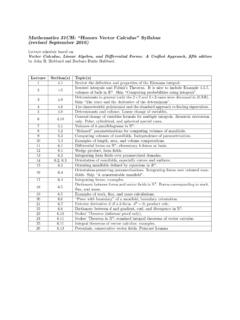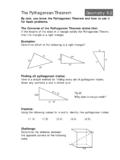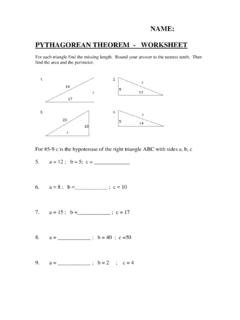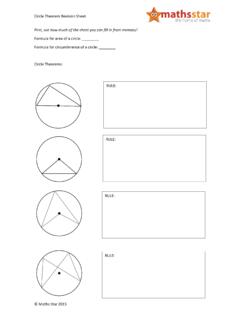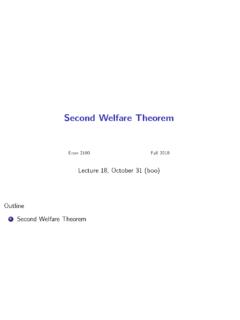Transcription of Proof of the Binomial Theorem 12.3 - UCSD …
1 Proof of the Binomial Theorem Theoremsays that: For all real numbersaandband non-negative integersn,(a+b)n=n r=0(nr)arbn example,(a+b)0= 1,(a+b)1=a+b,(a+b)2=a2+ 2ab+b2,(a+b)3=a3+ 3a2b+ 3ab2+ (n) be the statement that for all real numbersaandb, (a+b)n= nr=0(nr)arbn Base Case is easy to we prove the Inductive thatk Z is such that inductive hypothesis (the formula forn=k, , the statementP(k))(a+b)k=k r=0(kr)arbk r.(1)We want to prove that inductive conclusion (the formula forn=k+ 1, , the statementP(k+ 1))(a+b)k+1=k+1 r=0(k+ 1r)arbk+1 r.(2)We compute that(a+b)k+1= (a+b)k (a+b)(3)=k r=0(kr)arbk r (a+b) by the inductive hypothesis=k r=0(kr)ar+1bk r+k r=0(kr)arbk+1 rby the distributive property;indeed, when we multiplyarbk rin line 2 bya,the power ofaincreases by 1 to getar+1bk rin thefirst term in line 3.
2 Similarly, when we multiplyarbk rbya,we getarbk+1 rin the second term inline +1 rin line 3 of (3) matches the form of the right-hand side of (2). To make the termar+1bk rin line 3 of (3) also match, we shift the variablerdown by 1 as + 1. Thenr=s , whenris summed from 0 tok,we then have thatsis summed from 1 tok+ the first term in line 3 of (3) may be rewritten ask r=0(kr)ar+1bk r=k+1 s=1(ks 1)asbk+1 s1(sincek (s 1) =k+ 1 s). Butsis just a name. So we can replacesbyrto getk r=0(kr)ar+1bk r=k+1 r=1(kr 1)arbk+1 (3) implies that(a+b)k+1=k+1 r=1(kr 1)arbk+1 r+k r=0(kr)arbk+1 would like to combine the two sums on the right-hand side into one sum.
3 But we have a slightmismatch in that the first sum is from 1 tok+ 1 whereas the second sum is from 0 take out ther=k+ 1 case from the first sum and we take out ther= 0 case from the firstsum from the second sum and combine things in the following way:(a+b)k+1=(k(k+ 1) 1)a(k+1)bk+1 (k+1)+k r=1(kr 1)arbk+1 r+k r=1(kr)arbk+1 r+(k0)a0bk+1 (k(k+1) 1)=(kk)= 1 and(k0)= 1,we have(a+b)k+1=ak+1+k r=1((kr 1)+(kr))arbk+1 r+bk+ 1 r k,by Proposition we have(kr 1)+(kr)=(k+ 1r).Hence(a+b)k+1=ak+1+k r=1(k+ 1r)arbk+1 r+bk+ noting thatak+1=(k+1k+1)ak+1b0(is ther=k+ 1 case in the sum) andbk+1=(k+10)a0bk+1(is ther= 0 case in the sum), we see that(a+b)k+1=k+1 r=0(k+ 1r)arbk+1 is the desired inductive conclusion (2).
4 By mathematical induction, the Proof of the Binomial Theorem is



